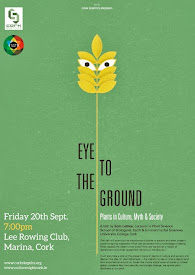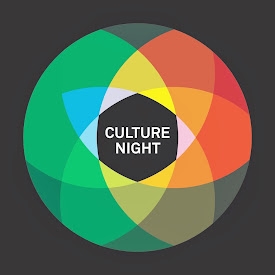The Forgotten Botanical Gardens
On the south side of Cork City, between Turners Cross football stadium and Munster Rugby's Musgrave Park, lies the remnants of the southern city's long lost botanical garden.
It's so long ago since the site was used as a botanical gardens and the duration of its existence so short, that the memory of it is almost gone from the public consciousness.
To find the site today, you need to look for Saint Joseph's Cemetery. Once the short-lived gardens were closed, the site became one of the largest public cemeteries in the city.
The Cork Botanical Gardens were established in 1808 by the Royal Cork Institution, which itself had been founded in 1803. The RCI had a huge influence on educational matters in Cork, supportive of the establishment of Queen's College Cork (now UCC) and the institution itself was a forerunner of Cork Institute of Technology. The gardens were themselves just one element of the RCI's plan to promote scientific and cultural matters in Cork.
The Scottish botanist James Drummond (1786-1863) was chosen to curate the new gardens and he continued to do so until its closure, due to lack of funds, in 1828. Drummond was just 22 when he arrived in Cork from Scotland. On the closure of the park, Drummond, his wife (Sarah Maxwell Mackintosh) and six children travelled to the Swan River Colony (Western Australia) where he took up various roles as Government Naturalist, farmer, and plant collector. A hill and nature reserve in Australia, as well as over 100 plants have been named in his honour. A memorial to Drummond stands in Pelham Reserve, overlooking the family farm at Toodyay, Western Australia.
Drummond's father, Thomas, was a noted bryologist (collector of mosses) in Scotland and his grandfather, also Thomas, was a gardener.
The gardens in Cork had their beginnings when the RCI leased the 5.5 acre site at 'Lilliput', Ballyphehane in 1807. Once Drummond arrived in 1808, he laid out the site with a walled enclosure of about 1-acre at its centre with a glasshouse. As well as his work in the gardens, Drummond botanised widely across the Co. Cork and was elected an associate of the Linnean Society in 1810. He discovered Spiranthes gemmipara near Castletown Berehaven in 1810 and the insectivorous Pinguicula grandiflora at Macroom in 1809.
Once government funding was withdrawn, the garden became untenable and Fr. Theobald Mathew, the 'Apostle of Temperence' purchased the site for use as a public cemetery for Cork's poor. An 1837 description in A Topographical Dictionary of Ireland says the botanical garden/graveyard was "in the style of the Pere la Chaise, at Paris: the graves are distributed over the greater part amid the shrubs, plants, and flowers brought hither at a very great expense by the original proprietors; the ground is intersected by broad gravel walks, and there are several handsome monuments. Among these, one of the most remarkable is that erected over a vault belonging to Messrs. Murphy and O'Connor: it consists of a sarcophagus of Portland stone resting on a base of limestone. On the sarcophagus is the figure of a mourning angel, as large as life, of white Italian marble, wrought in Rome by Mr. John Hogan, a native of Cork". Fr. Mathew was buried at the centre of his own cemetery in 1856.
For many years after the closure of the gardens and the opening of the cemetery, it was common for the place to be referred to as the 'Botanic Gardens Cemetery'. A death notice in the Cork Examiner on 31st October 1898 concludes: "Funeral from the South Parish Chapel for the Botanic Gardens on Tuesday (Nov. 1st), at 3 o'clock. R.I.P."
Now, all that remains of the gardens is the inner stone wall which once housed Drummond's glasshouse and which is now crowded with headstones and monuments. No significant planting remains. The street opposite the main gates to the cemetery is still however called Botanic Road. Unfortunately, nothing else marks the site of Cork's first Botanic Garden. Although further public and private botanic gardens were to be established, including that associated with University College Cork, this site at Ballyphehane has a unique place in the cultural and scientific heritage of the City. A place which has been all but forgotten by the general public.
The site should be marked with a suitable and modest marker to celebrate the vision of the Royal Cork Institution and the hard work of James Drummond.
It's so long ago since the site was used as a botanical gardens and the duration of its existence so short, that the memory of it is almost gone from the public consciousness.
To find the site today, you need to look for Saint Joseph's Cemetery. Once the short-lived gardens were closed, the site became one of the largest public cemeteries in the city.
The Cork Botanical Gardens were established in 1808 by the Royal Cork Institution, which itself had been founded in 1803. The RCI had a huge influence on educational matters in Cork, supportive of the establishment of Queen's College Cork (now UCC) and the institution itself was a forerunner of Cork Institute of Technology. The gardens were themselves just one element of the RCI's plan to promote scientific and cultural matters in Cork.
 |
| James Drummond with one of his grandchildren |
The Scottish botanist James Drummond (1786-1863) was chosen to curate the new gardens and he continued to do so until its closure, due to lack of funds, in 1828. Drummond was just 22 when he arrived in Cork from Scotland. On the closure of the park, Drummond, his wife (Sarah Maxwell Mackintosh) and six children travelled to the Swan River Colony (Western Australia) where he took up various roles as Government Naturalist, farmer, and plant collector. A hill and nature reserve in Australia, as well as over 100 plants have been named in his honour. A memorial to Drummond stands in Pelham Reserve, overlooking the family farm at Toodyay, Western Australia.
Drummond's father, Thomas, was a noted bryologist (collector of mosses) in Scotland and his grandfather, also Thomas, was a gardener.
 |
| Pinguicula grandiflora |
 |
| Hogan's reclining angel atop the Murphy tomb. The inner wall of the cemetery and botanical gardens is visible in the background. |
 |
| Grave of Fr. Theobald Mathew |
Now, all that remains of the gardens is the inner stone wall which once housed Drummond's glasshouse and which is now crowded with headstones and monuments. No significant planting remains. The street opposite the main gates to the cemetery is still however called Botanic Road. Unfortunately, nothing else marks the site of Cork's first Botanic Garden. Although further public and private botanic gardens were to be established, including that associated with University College Cork, this site at Ballyphehane has a unique place in the cultural and scientific heritage of the City. A place which has been all but forgotten by the general public.
The site should be marked with a suitable and modest marker to celebrate the vision of the Royal Cork Institution and the hard work of James Drummond.


























7 comments:
Thank you for posting about these long lost gardens. I will make sure to go to the remnant cemetery & think about the gardens if I'm ever able to travel to Cork. There should be more appreciation of these older gardens as no one much is establishing new ones these days with land being so expensive.
Wow, I had no idea. My grandmother is buried there and I always thought it an unusual looking cemetary.
Going to have to go in for a nose around with a different viewpoint now!
The spirit of the gardens still lives on in the local community in the long standing tradition of kitchen gardens in the Ballyphehane area. An the road the St. Joseph's is on is called Tory Top Road, another reminder of its past use. So its still remembered.
They were known locally as the bots
it was known locally as the bots
James Drummond was one of 5 botanists who all came from Forfar in Angus. The Friends of the Forfar Botanists have opened a new garden in the town to celebrate them. James went out to the Australia and sent back about 3500 plant samples to Kew Gardens. 93 plants have been named after him, as well as a mountain and nature reserve in Western Australia www.forfarbotanists.org
Thanks Eleanor. That's really interesting. Will definitely check that site out.
Eoin
Post a Comment